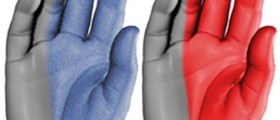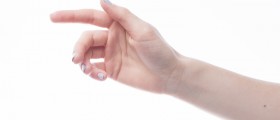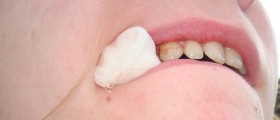Occurrence
Cubital Tunnel syndrome (CTS) can affect anyone. In most cases, the cause remains unknown, but many medical conditions such as pregnancy rheumatoid arthritis, thyroid disease, and wrist injuries can increase the risk of CTS occurrence. If the ulnar nerve, which is passing through a tunnel of the inner side of the elbow joint known as the cubital tunnel, is pressed at that location, resulting pressure will initiate the appearance of symptoms of CTS.
Symptomatology
Typical sensation triggered by pressure on the ulnar nerve can be described as pricking in the little and ring finger and in the inner side of the forearm, which is usually relieved by shaking the arm. Severe CTS cases may cause deterioration of certain muscles in the palm thus affecting the position and strength of the thumb and little finger.
Clinical procedures carried out during the examination of the patient used for triggering a CTS syndrome are a minute-long Flexing of the elbow or tapping on the nerve in the cubital tunnel. More complex cases may require a nerve conduction study.

Treatment
CTS treatment may be nonoperative, as in mild cases, and include therapy by painkillers and resting splints. Most patients whose symptoms are harsher will undergo surgery. It is a single-day procedure, and the surgery itself takes less than half an hour and requires only local anesthesia. Effects of the anesthesia wear off in about six hours, and pain control by analgesia should begin before the effects of anesthesia are gone.
Patient is released home soon after the operation, and surgery follow-up procedures given by the physician should be followed. It is generally advised to exercise bending and stretching of fingers immediately, to keep the arm elevated (held above the heart level) to prevent swelling of the hand and fingers, and to avoid straining of muscles on the treated hand for two to three weeks.
Improvement may be observed within a week and complete recovery after up to three months. The return period to unhampered normal daily activities, such as driving, work, and manual labor may vary, and physicians should be consulted. Putting too much strain on a newly healed wound can cause complications.
Complications After Surgery
A minor percentage of treated patients may experience complications. The majority of these complications are comprised of infections, numbness, neuroma, and bad reaction of the organism to surgery. More specific complications are unresolved symptoms, which are usually the case if the nerve has been scarred by pressure before surgery, numbness at the tip of the elbow, and the tendency of the nerve to jump out of its position when the elbow is moved.
- Cubital tunnel decompression is a commonly performed operation with a much higher failure rate than carpal tunnel release.
- Failed cubital tunnel release generally occurs due to an inadequate decompression in the primary procedure, new symptoms due to an iatrogenic cause, or development of new areas of nerve irritation.
- Our preferred technique for failed release is revision circumferential neurolysis with medial epicondylectomy, as this eliminates strain, removes the risk of subluxation, and avoids the creation of secondary compression points.
- Adjuvant techniques including supercharging end-to-side nerve transfer and nerve wrapping show promise in improving the results of revision surgery.
- Limited quality research exists in this subject, compounded by the lack of consensus on diagnostic criteria, classification, and outcome assessment.

















Your thoughts on this
Loading...